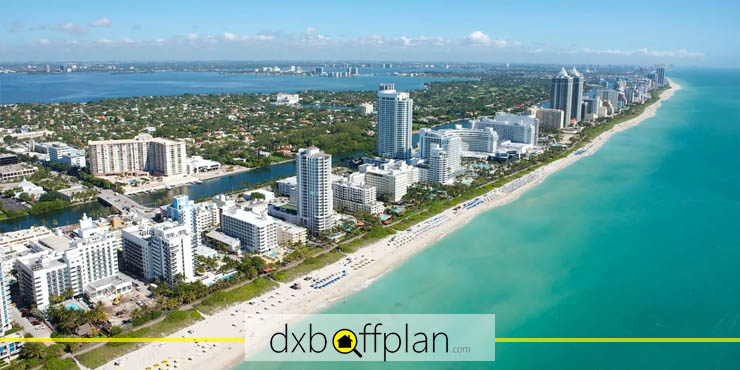Global Real Estate Bubble Trends 2024: Insights for Smart Property Investments
2024 is a year of great change in the global real estate market. Against a backdrop of seesawing interest rates, sustained housing shortages, and a divergence in the dynamics of different regional markets, buyers, sellers, and investors will want to know what’s going on. The UBS Global Real Estate Bubble Index 2024 provides an in-depth look at bubble risks for 25 major cities around the world. It identifies markets where prices may be unsustainable and offers insights into areas with growth potential.
This article explores the key findings of the report, focusing on risks, regional trends and investment opportunities.
What is a Real Estate Bubble?
A real estate bubble is a situation when the prices of property rise significantly higher than their intrinsic value because of speculative buying. These bubbles are usually short-lived and followed by a sharp correction.
The key features of a real estate bubble include:
- Decoupling of Prices from Fundamentals: Prices start to rise faster than incomes and rental values.
- Excessive Speculation: Investors buy properties in anticipation of continuously rising prices, thus fuelling demand.
- Economic Imbalances: Bubbles are often accompanied by rapid increases in mortgage lending or construction.
Indeed, the Miami market has had significant price appreciation in recent years, far outpacing income and rental gains. These are dynamics typical of a bubble.
Global Housing Market in 2024
The housing market in 2024 is a mix of stability and volatility. The key findings of the UBS report include:
- Bubble Risks Declining in Europe: Cities like Frankfurt and Munich have witnessed price corrections of up to 20% and hence, reduced bubble risks.
- Stability in Asia-Pacific: Markets such as Sydney and Singapore are still stable due to a shortage of housing and strong demand.
- US Market Trends: Miami is at the top for bubble risk, while New York and San Francisco are stabilizing.
Some of the factors influencing the trends are:
- Interest Rate Changes: Increasing rates in 2023 reduced affordability and caused price corrections in some cities.
- Housing Shortages: Lack of construction has driven prices upward in high-demand areas like Dubai and Madrid.
Key Findings by Region
In the following, we will further examine the key findings based on the region:
Europe
- Frankfurt and Munich: These cities experienced sharp price corrections following the 2022 interest rate hikes. Real prices fell by 20%, reducing bubble risks from high to moderate levels.
- Paris: Prices in Paris declined by 10% in 2023 due to stretched affordability and higher taxes. Bubble risk is now considered low.
- Madrid: Despite unfavorable financing conditions, housing prices rose by 5% due to strong demand and limited supply.
United States
- Miami: With a bubble risk score of 1.79, Miami tops the list. Luxury property demand and limited inventory drive imbalances.
- New York: Prices remain stable but are only slightly below pre-pandemic levels. A historic drop in new construction activity supports price stabilization.
- San Francisco: Quality-of-life concerns and hybrid work patterns have affected demand, but falling interest rates are revitalizing the luxury segment.
Asia-Pacific
- Hong Kong: House prices have declined to 2012 levels due to high interest rates and weak buyer confidence.
- Tokyo: Price-to-income ratios are among the highest globally, reflecting elevated bubble risks.
- Sydney: A severe housing shortage has kept prices resilient, despite affordability challenges.
Middle East
Dubai: Dubai’s real estate market is booming, with prices up 40% since 2020. With speculative off-plan sales increasing risks, dxboffplan.com ensures secure and profitable investments. Explore exclusive off-plan properties and get expert guidance to find your perfect home or investment in Dubai.
Top Cities with High Bubble Risks
Miami, Tokyo, and Zurich again lead the UBS Global Real Estate Bubble Index 2024 with considerable risks due to the rapid hike in prices and imbalances between home prices, income, and rents. In Miami, it is driven by luxury demand and speculative activity, while in Zurich, affordability further deteriorates. Tokyo remains overvalued and is at risk, with loose monetary policies and increased demand from abroad.
Miami
Miami has unsustainable growth, with luxury home prices almost 50% higher than in 2019. Demand from high-net-worth individuals has supported the market, but future growth may be dampened by rising mortgage rates and regulatory changes.
Tokyo
Prices in Tokyo’s metropolitan district, for instance, have gained a remarkable 30% in just five years; its income and rentals have further kept the risk of its bubble pretty high. The same was nudged further outward by loose monetary policy and demand from foreigners.
Zurich
Strong price growth on the back of high demand and low supply propels Zurich 20% above pre-pandemic levels but worst in Europe for affordability.
Cities with Low Bubble Risks
In 2024, São Paulo, Milan, and Warsaw present low bubble risks as price growth is stable, affordability is improving and housing demand is in balance. These markets are still attractive for buyers, with only minimal signs of speculative activity or sharp price corrections.
São Paulo
São Paulo, after years of stagnation, finally records a modest growth. High interest rates favored the rental market, weakening demand for house buying.
Warsaw
After increasing by 15% in the beginning of the year 2024, powered by strong jobs and government support, Warsaw still has a well-balanced market. Affordability remains fair.
Housing Shortages and Their Consequences
Housing shortages are a key driver of price increases in many markets. For example:
- Dubai: Despite significant new construction, demand continues to outpace supply.
- Sydney: Housing supply in Sydney is limited, so the price levels are good, even despite high interest rates.
High rents and low inventory also attract institutional investors, further increasing competition in already tight markets.
Interest Rates and the Housing Market
Interest rates are the most important factors that determine the nature of housing markets.
High Rates: Reduce borrowing capacity and suppress demand. In Frankfurt, rising rates led to a 20% price correction.
Falling Rates: Improve affordability and, therefore, stimulate demand, expected in Zurich and London in 2024.
Investment Opportunities in 2024
Investors should focus on markets with strong demand drivers and manageable risks, making Dubai’s real estate market an attractive option due to its robust infrastructure, investor-friendly policies, and consistent growth in property demand.
- Dubai: Offers attractive rental yields of 6-7%, supported by robust economic growth.
- Madrid: Constrained supply with increasing demand; therefore, it will also be one of the long-run gainful markets.
- Milan: Future infrastructure projects, including the 2026 Winter Olympics, are likely to boost property values.
Conclusion
The 2024 UBS Global Real Estate Bubble Index has brought a variety of complexities in the global housing market. While some cities have high bubble risks, others present stable or growing opportunities. Investors and buyers should approach these markets with careful analysis, prioritizing regions with strong fundamentals and long-term growth potential.
By staying abreast of such trends, stakeholders will be able to meet the challenges in the real estate market and capitalize on the opportunities availed in 2024.
From DXBOffPlan, we guide you through the vibrant landscape to find that perfect property matching your exclusive needs. Be it your first purchase, a well-seasoned investor, or the first time looking to venture into Dubai’s off-plan projects, our panel of experts guarantees you a seamless and profitable experience.
frequently asked questions
A real estate bubble occurs when property prices rise excessively due to speculative demand and decouple from income and rental growth.
Miami, with a bubble risk score of 1.79, leads globally.
High rates suppress demand, causing price corrections, while falling rates boost market activity.
Dubai, Madrid, and Milan stand out for their growth potential and economic resilience.
Limited supply exacerbates shortages, driving prices higher but stabilizing markets in the short term.












